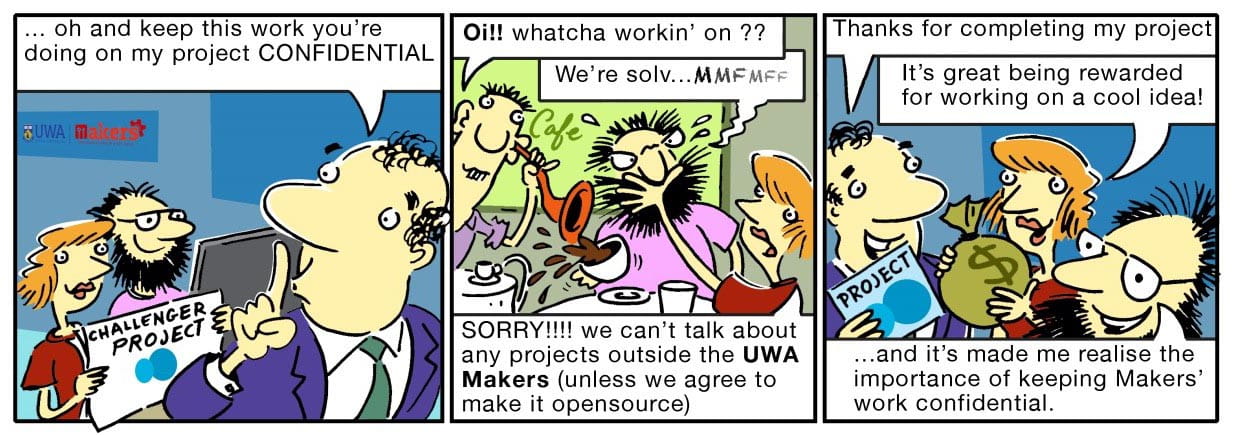You've won the bid to design a piece of infrastructure set to change how quickly commuters get to work. It's a major project and your designs are heralded as extraordinary. You can’t wait to see the end product come to life… but wait you’ll have to, and so will the city! The design development and approval procedures with their changes, recommendations and then further compliance reviews, changes and recommendations is a spaghetti bowl of processes that despite the project’s purpose is everything but quick. Sound familiar?
We want to ensure excellence and accountability, yet all these checkpoints, wrapped up in complex and challenging contractual and commercial frameworks can end up making one big rabbit hole – complicated and congested at best. In today’s complex world of procurement, it seems at times we can build a bridge quicker than we can design one.
On the flip side, given our species’ track record of environmental flagrancy and the ever increasing loss of business trust, someone has to be the gatekeeper and assure the voiceless are spoken for.
Somewhere economic growth has to be filtered through the sieve of environmental and social impact. Somehow we have to ensure that history doesn't repeat itself, and the essential checks and balances hold business at bay. After all, it’s not much use closing the gate after the horse has bolted.
But what if there was another way? Rather than overhauling the current systems, how about redesigning them?
Take contracts as an example. Imagine if they were reduced to their core principles and read like comic strips, rather than telephone books. Imagine if they were written to encourage the behaviours we so desperately need to get our economies moving (like innovation and creativity) instead of a litany of punitive actions that will befall those who dare suggest a change to its terms for the better. Think of what could be unleashed, if contracts balanced our efforts and didn't bottleneck them. We may end up proving that, even in the complex world of projects, less is still more…

Pictured above: a Non-Disclosure Agreement in cartoon format by artist Loui Silvestro, created as part of the UWA Comic Contracts research project.
It’s a process nightmare
Procurement and design processes can often feel like the Encyclopaedia Britannica of rules and roadblocks – smothered in fingerprints, with far too many fingers in the pie. A typically convoluted approval process of multiple gatekeepers that cause delays – in part from lack of clarity of roles and responsibilities, but more around multiple hurdles to jump for multiple gatekeepers.
In a world where now the common vernacular is ‘move fast’, the time taken to realise a project or initiative often means it runs the risk of being out of date by the time it hits the starting blocks. Being first to get a foothold and stake your claim on the ‘next big thing’ is essential for success – yet project approvals and complex procurement processes work in the opposite way. This not only ups the cost for delivering the infrastructure but it ups the risk of running late and puts a dampener on the very economic activity that revenue strapped governments are so desperately needing to stimulate.
Never too old for comic strips
Too often, agreements for major projects are too complicated for their own good. Those who develop the agreement often lose sight of the original purpose and intent of the project and when it’s written to focus on penalties for lack of compliance, the appetite for innovating quickly becomes zero.
Alternatively: Imagine if contracts could be understood in intimate detail, including their intent. Imagine if your four-year-old son or daughter could make sense of it and actually enjoyed reading it. Imagine if the contract encouraged innovative behaviour and ideas in order to save time and money and that those ideas could come from anyone on the project?
Believe it or not, it may be possible to take 300 pages of penalties and liabilities, of indemnifications and risk transference – and distil them down to a mere handful of pictures that everyone can understand. They wouldn’t require a magnifying glass to read them; in fact, there would be no words.
Pictorial and to the point, these contracts would clearly indicate what is expected from all parties involved. No Juris Doctors needed; even our own kids could understand the take away. These comic strip contracts could be smart contracts as well, ensuring that companies only receive payment after meeting their pre-determined conditions set on the ethereum platform.
From where you’re sitting now, this level of red tape reductionism may seem impossible. But Prof Camilla Andersen from the University of Western Australia believes it can be done, and it should be done.
Says Andersen, “I think what we are seeing is that we're making law more approachable, we're making it clearer. The idea is to reduce conflict and to focus more on driving behaviour rather than focusing on creating a legally binding instrument.”
Lawyer Robert de Rooy, who recently worked with artists to reduce the South African Employment Law contract to cartoons and used the cartoon concept to support 650+ contracts for fruit pickers reports that this approach saw the onboarding of employees reduced from 4 hours to 45 minutes and conflicts at the end of the season to zero.
Of course, the danger is that you can lose some nuances of the contract when translating compliance into simple pictures. But this tension leaves companies to ask the healthy questions, ‘What is the most important behaviour we want to address? And what can we afford to leave out in the larger scale of things?’
Ultimately, we all want the same thing. But how we get there needs to be reimagined. The business world today is overwhelmingly complex. But our solutions, in the face of this complexity, need to stay simple. Perhaps comic book and compliance have more in common than we think!
This blog was authored by: John Callaghan





